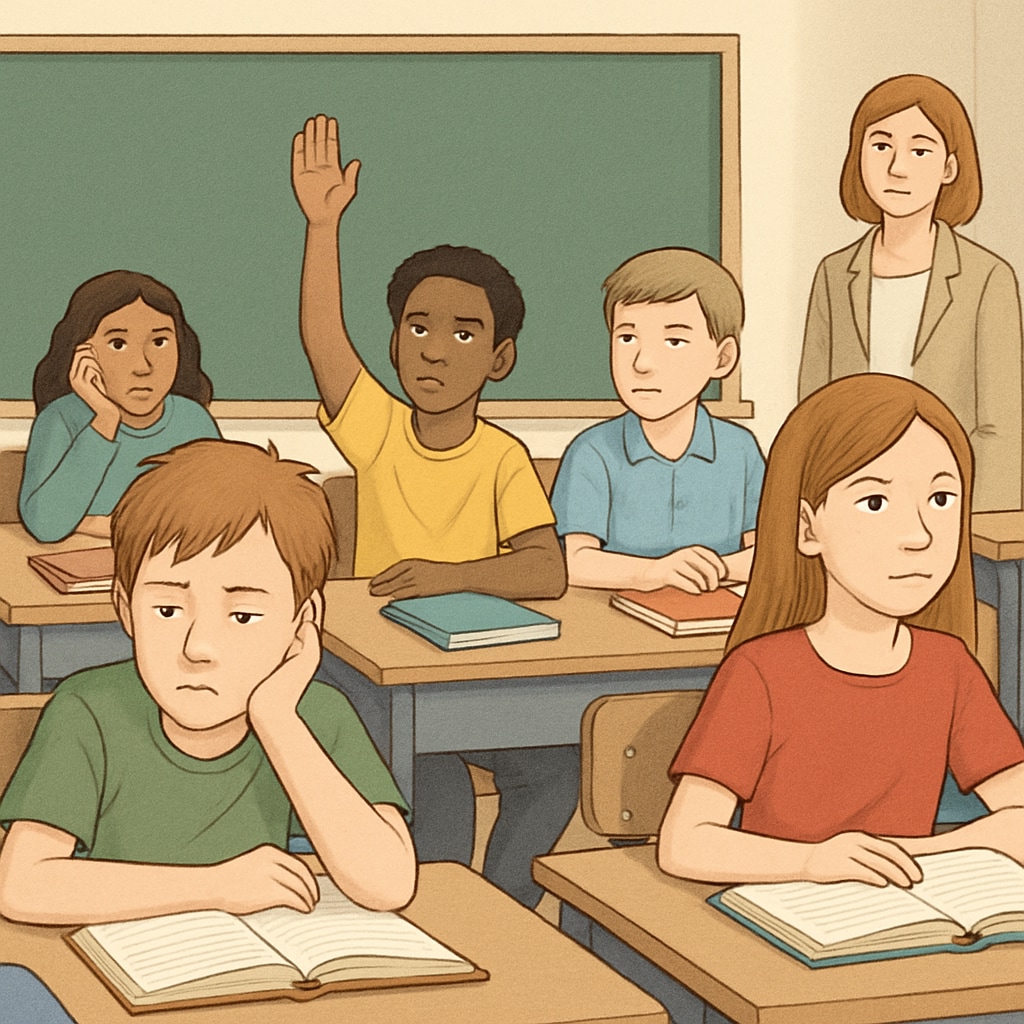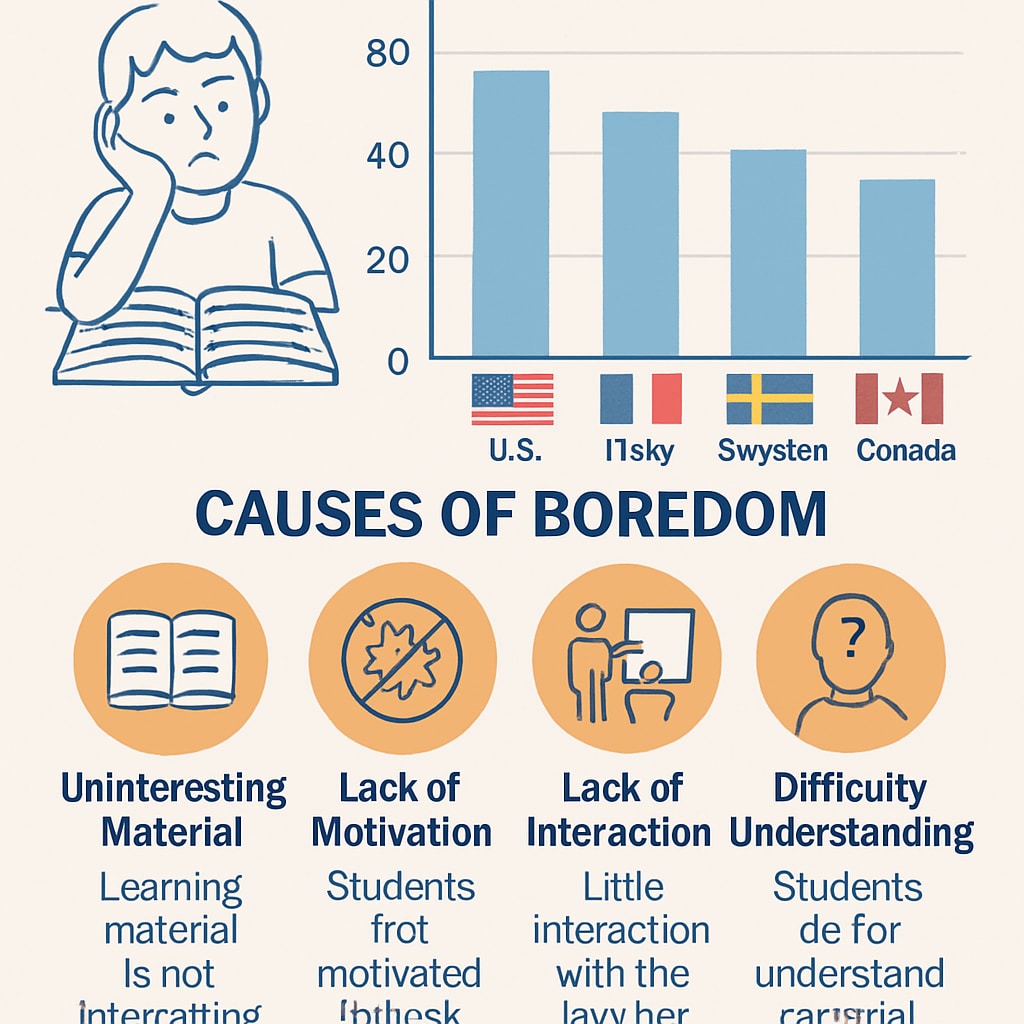Student boredom in K12 education is a growing concern that transcends borders, cultures, and curricula. According to cross-national research, students across the globe report feeling disengaged and unmotivated in classroom settings. This article examines the causes and consequences of student boredom, backed by global data, and explores innovative teaching methods to reduce boredom and enhance learning outcomes.
What Do Cross-National Studies Reveal About Student Boredom?
Research on student boredom in K12 education shows that this issue is widespread. A study conducted by the Organisation for Economic Co-operation and Development (OECD) found that nearly 50% of students across its member countries described their classrooms as “boring.” Similarly, data from the Programme for International Student Assessment (PISA) highlighted that students in high-performing countries like Finland and South Korea still reported significant levels of boredom, despite their educational achievements.
Boredom appears to be a universal challenge, but its prevalence varies by region due to cultural and systemic factors. For instance:
- In the United States, boredom is often linked to a lack of personalized learning opportunities.
- In countries like Japan, rigid teaching methods and pressure to excel academically contribute to disengagement.
- In developing nations, limited resources and overcrowded classrooms exacerbate the problem.
While the specifics may differ, the common thread is a disconnect between the student’s needs and the learning environment.

Why Do Students Feel Bored in the Classroom?
The causes of boredom in educational settings are complex and multifaceted. Based on cross-national studies, the primary reasons include:
- Repetitive Instruction: Teaching methods that rely heavily on rote memorization and lack interactive elements often fail to capture students’ attention.
- Irrelevant Content: Students may perceive the curriculum as disconnected from real-world applications or their personal interests.
- Over- or Under-Challenging Material: When content does not align with a student’s skill level, it can result in frustration or disinterest.
- Technological Distractions: In modern classrooms, smartphones and the internet can divert attention away from lessons.
These factors not only lead to boredom but can also negatively impact academic performance, as disengaged students are less likely to retain information and participate actively in class discussions. Research from the American Psychological Association supports this, showing that boredom correlates with lower test scores and higher dropout rates.

Addressing Boredom Through Innovative Teaching Strategies
To counter student boredom, educators and policymakers must rethink traditional teaching practices. Here are some evidence-based strategies that have shown promise:
- Personalized Learning: Tailoring lessons to individual students’ interests and abilities can make learning more engaging. Adaptive learning technologies, such as AI-based platforms, are increasingly being used to achieve this.
- Active Learning Techniques: Methods like group discussions, project-based learning, and hands-on activities encourage student participation and reduce monotony.
- Integrating Technology: Tools such as interactive whiteboards, virtual reality, and gamified learning platforms can make lessons more dynamic and relatable.
- Teacher Training: Providing professional development opportunities for educators to learn innovative methods can improve classroom engagement.
For example, Finland’s success in reducing student boredom can be attributed to its focus on student autonomy and experiential learning. Likewise, schools in the United States that have adopted flipped classroom models report higher levels of engagement and academic success.
As educators strive to create more engaging classrooms, it is crucial to involve students in the process by seeking their feedback on teaching methods and content relevance.
The Role of Policymakers and Educational Systems
Addressing student boredom requires systemic changes. Policymakers must prioritize educational reforms that promote creativity and flexibility in teaching. For instance, reducing standardized testing in favor of holistic assessments can alleviate pressure and make learning more enjoyable. Additionally, investing in teacher training and classroom resources is essential to support innovative practices.
Finally, cross-national collaboration can provide valuable insights. By sharing successful strategies and adapting them to local contexts, countries can collectively work towards reducing boredom in education. The OECD and UNESCO have already initiated programs to facilitate such exchanges.
In conclusion, student boredom in K12 education is a universal issue with far-reaching consequences. However, by understanding its causes and implementing targeted solutions, educators can create learning environments that are not only engaging but also conducive to long-term academic success.
Readability guidance: This article uses short paragraphs, lists, and active voice to ensure clarity. Data and examples from cross-national studies add credibility, while actionable strategies provide practical value for educators and policymakers.


